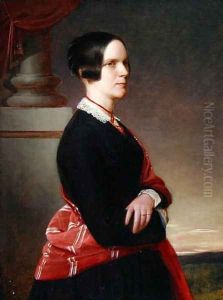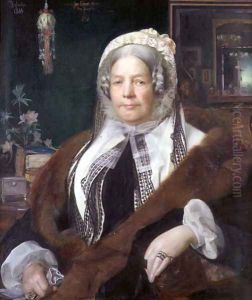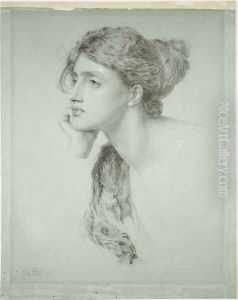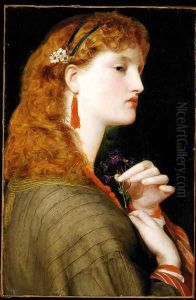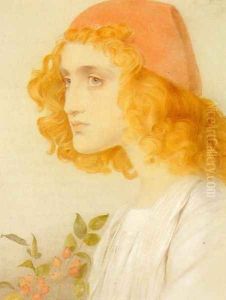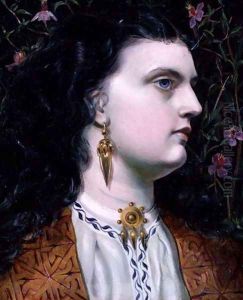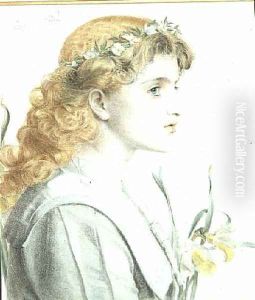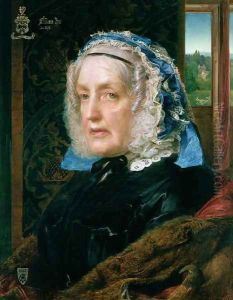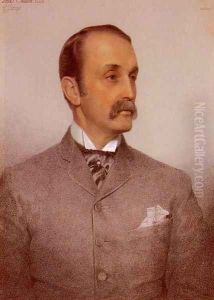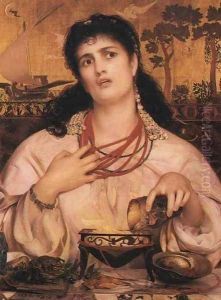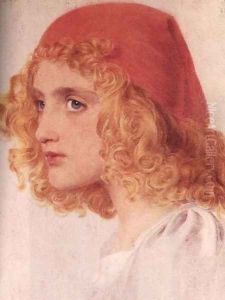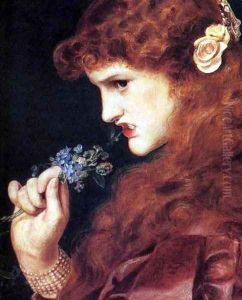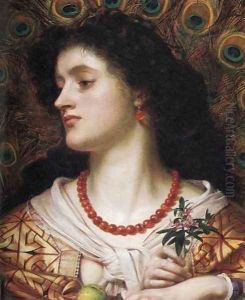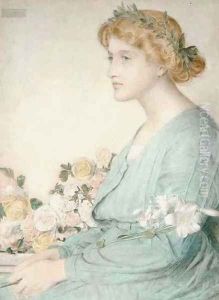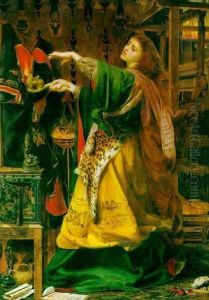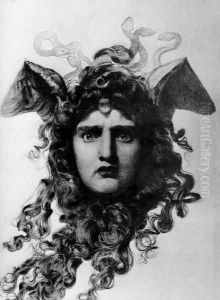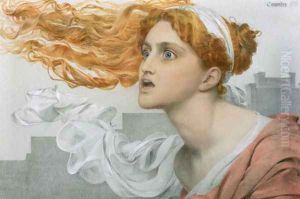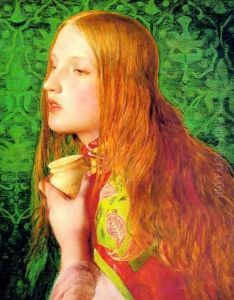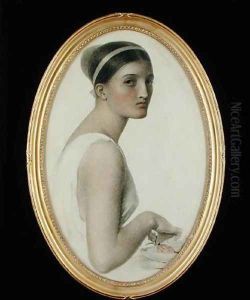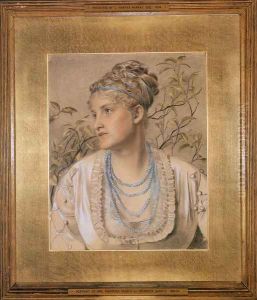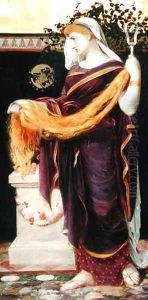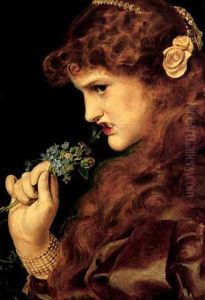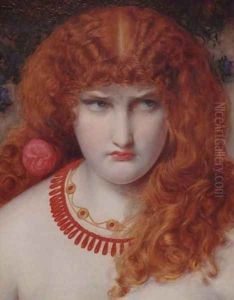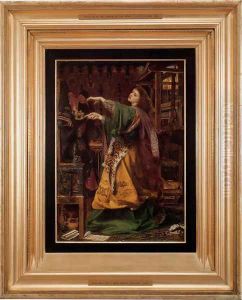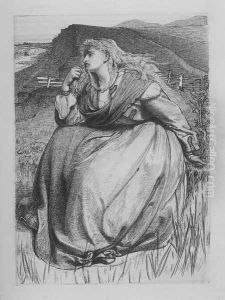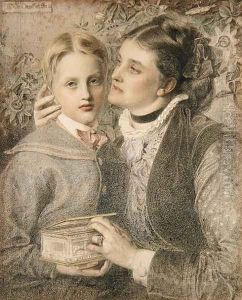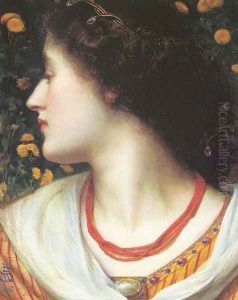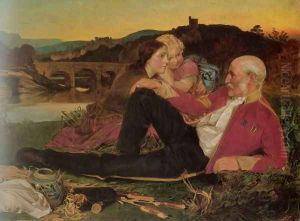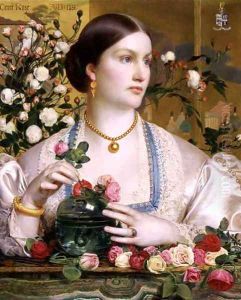Anthony Frederick Sandys Paintings
Anthony Frederick Augustus Sandys, commonly known as Frederick Sandys, was a British painter and illustrator associated with the Pre-Raphaelite Brotherhood. Born in Norwich, England, on May 1, 1829, Sandys was part of a family with a strong artistic tradition. His father, Anthony Sands (originally spelled without the 'y'), was a painter and decorator, and his brothers and sisters were also artistically inclined.
Sandys began his formal artistic training under his father and later attended the Norwich School of Design. In the 1850s, his work was influenced by the Pre-Raphaelite Brotherhood, an art movement that emphasized a return to the detail, intense colors, and complex compositions of Quattrocento Italian art. Although Sandys was never an official member of the Brotherhood, he shared their aesthetic values and was a close associate of one of the founders, Dante Gabriel Rossetti.
In the early stages of his career, Sandys focused on historical and biblical themes, often marked by his meticulous approach to detail and his fascination with medieval and early Renaissance art. His work was characterized by its rich colors, elaborate ornamentation, and portrayal of beautiful women. One of his best-known pieces from this period is 'Medea' (1866-1868), which showcased his skill in capturing the intensity of emotions and the texture of fabrics.
Beyond painting, Sandys was also renowned for his work as an illustrator, producing designs for the periodical 'Once a Week' and for books such as 'Comus' by John Milton and 'The Earthly Paradise' by William Morris. He developed a distinctive style of portraiture as well, which often featured strong, detailed features and a penetrating gaze, as seen in works such as 'Vivien' and 'Morgan le Fay'.
Sandys' later years were less publicly successful, and he faced financial difficulties. He continued to paint, however, and his artworks from this period often reflect a preoccupation with mortality and decadence. His personal life was also marked by complexities, including a long-term relationship with actress Mary Emma Jones (known as Miss Clive), with whom he had ten children.
Frederick Sandys passed away on June 25, 1904, in London, leaving behind a legacy that had a significant impact on the aesthetics of the Victorian era. His work is represented in numerous public collections, including the Tate Gallery and the Victoria and Albert Museum in London, where his contributions to the Pre-Raphaelite movement and Victorian art continue to be appreciated.
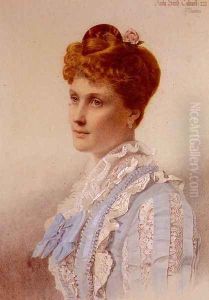
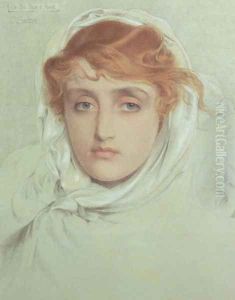
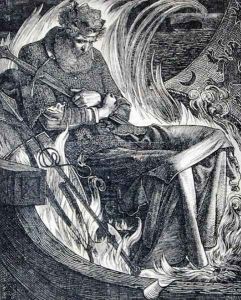
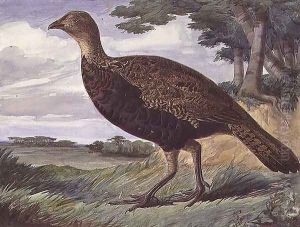





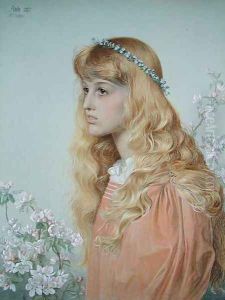

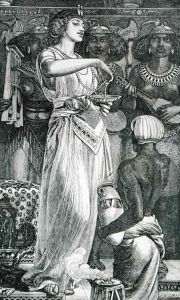
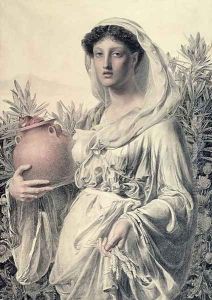
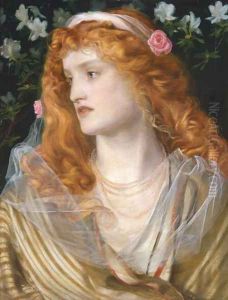
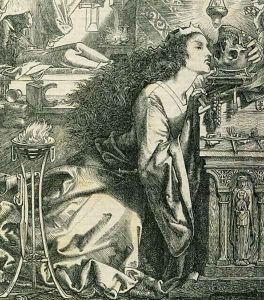
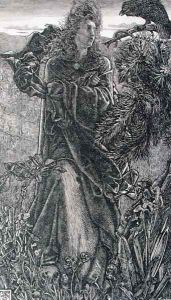
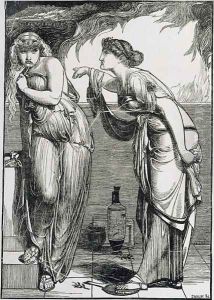
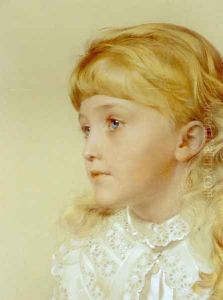
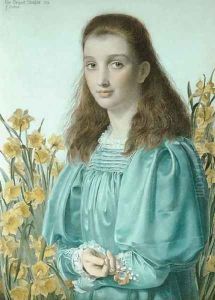
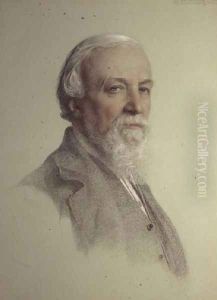
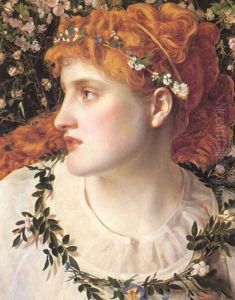
![Portrait of May Gillilan [detail: 1]](https://www.niceartgallery.com/imgs/274713/s/anthony-frederick-sandys-portrait-of-may-gillilan-detail-1-e4701351.jpg)
